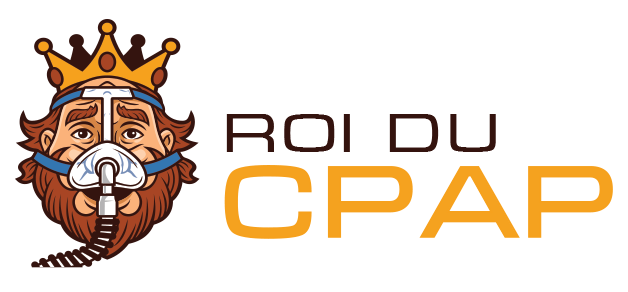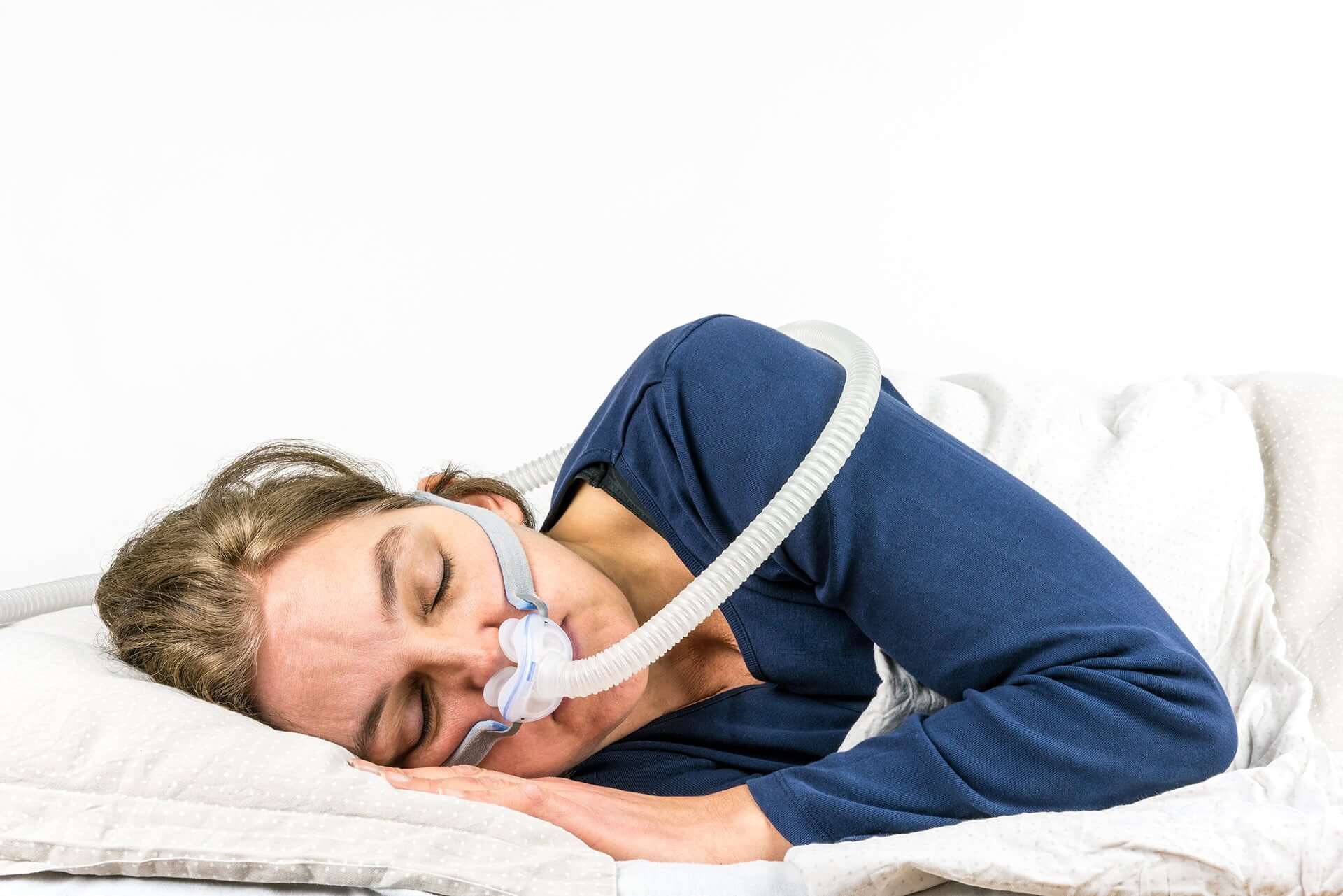Understanding Different Mask Types
As a specialist in sleep apnea, it is imperative to understand the various types of CPAP masks available. Advancements in technology have resulted in the development of more compact and lightweight masks, featuring soft padding and cushions to ensure comfort during therapy. The masks may encompass both the nose and mouth or be designed to fit exclusively over or under the nasal passages. Most masks are attached to headgear that fits around the back of the head, and it is crucial to achieve the proper fit to avoid leaks and minimize irritation. The diversity of shapes and sizes, including specific designs for female patients, make it possible to select the optimal mask based on individual needs and sleeping habits. Factors such as the ease of disconnection during nighttime needs and the ability to see while reading or watching television in bed should be considered when making a choice.
Tips For Sleeping With a Mask
I advise patients undergoing CPAP therapy to approach the process with patience and a gradual approach. The initial experience of sleeping with a mask and pressurized air can be challenging, but with time, it will become more natural. To facilitate the adjustment process, it is recommended to start by acclimatizing to the mask while awake, perhaps while engaging in leisure activities such as watching television or reading. Gradually increasing the duration of therapy and setting smaller, attainable goals can help to build confidence and lead to long-term success. It is important to recognize that full compliance with therapy may not be achieved immediately and to give oneself the time and space needed to fully adjust.
Ensure the Right Fit
As a sleep apnea specialist, I emphasize the significance of achieving the proper fit with your CPAP mask. The right fit not only enhances comfort but also ensures effective therapy. It is recommended to seek assistance from a medical professional, such as a doctor, sleep technologist, or CPAP supplier, when selecting and fitting a mask. During the fitting process, the size of the mask and headgear should be adjusted based on the individual's head and face shape to ensure comfort and avoid pressure marks or skin irritation. A proper seal is crucial to prevent air leakage and maximize the efficacy of therapy. Thus, it is imperative to prioritize achieving the correct fit with your mask.
Ramp
The initiation of CPAP therapy can be difficult for some patients. To facilitate the transition, the use of a ramp feature may be beneficial. The ramp feature allows for a lower pressure setting when first falling asleep, gradually increasing to the prescribed pressure set by the physician. This can help to reduce discomfort and make it easier to fall asleep. If your current machine does not have a ramp feature, it may be worth considering switching to one that does. Although many patients eventually adjust to therapy without the use of the ramp feature, it can serve as a useful tool during the initial stages of treatment.
Nasal Spray or a Humidifier
As a sleep apnea specialist, I recommend using a humidifier or nasal spray for those undergoing CPAP therapy. The air used by the CPAP machine is sourced from the surrounding environment, which may lead to irritation and discomfort, particularly during times of temperature extremes, such as during air conditioning or heating. The utilization of humidified air or a pre-bedtime nasal saline spray can help to mitigate these adverse effects by preventing dryness and irritation of the nasal passages. This can lead to improved comfort and reduced disruptions during sleep.
Adjustable base beds
Consider an adjustable base bed for those undergoing CPAP therapy. Elevating the head of the bed through an adjustable bed can improve symptoms of mild sleep apnea and increase the comfort of CPAP therapy. By promoting open airways, the adjustable bed may allow for lower pressure settings, improving therapy tolerance and compliance. Additionally, the proximity of the adjustable bed to the CPAP machine may also provide additional hose length for movement during sleep.
Anxiety Treatment
In addition to seeking medical help, practicing relaxation techniques such as deep breathing, meditation or progressive muscle relaxation may also help to manage anxiety while using a CPAP machine. Using a comfortable, well-fitted mask and trying out different masks to find the one that feels most comfortable for you can also make a big difference. It is also helpful to establish a routine and make your sleep environment as comfortable and calming as possible to promote a peaceful sleep experience.
It's important to understand that using a CPAP machine is not a one-size-fits-all solution. If you are having trouble adjusting to therapy, try different masks, explore alternative therapies, or talk to your doctor about medication options to help you feel more comfortable with the treatment. Additionally, don't be afraid to voice any concerns or issues you may be having with therapy as your doctor and sleep technologist are there to help you every step of the way. Remember, the goal is to get you the best quality of sleep and it's okay to take your time adjusting to the therapy.
Expiratory Pressure Relief
It's important to remember that these features may not be necessary for everyone, but they're available for those who need them. Your doctor or sleep technologist can help you determine if expiratory pressure relief or other features are right for you and can assist with adjusting the settings to find the right balance between comfort and effectiveness.
Additionally, it's important to regularly clean and maintain your CPAP equipment to ensure proper function and hygiene. This includes cleaning the mask, tubing, and machine regularly and replacing parts as needed. Make sure to follow the manufacturer's instructions for cleaning and maintenance.
Finally, it may also be helpful to talk to other people who use CPAP therapy, as they may have helpful tips and advice for making the experience more comfortable. Joining a support group or participating in online forums can be a great way to connect with others who are going through similar experiences.
Positioning During Sleep and Its Impact on Obstructive Sleep Apnea (OSA)
Different types of masks are optimal for varying sleep positions. For instance, masks that cater to individuals who sleep on their back are different from those suited for side sleepers. It is important to note that sleeping on the side can result in tubing distortion, reducing the airflow and pressure delivered through the mask. Fortunately, there are masks specifically designed for side sleeping that mitigate the risk of tubing kinking.
Adopting the side sleeping position may help alleviate some of the symptoms of sleep apnea and potentially lower the required pressure settings. Although this may not immediately result in discontinuation of therapy, it may represent a positive step towards eventually discontinuing the use of Continuous Positive Airway Pressure (CPAP).
Additionally, sleeping on the side may offer the advantage of using a nasal mask instead of a full face mask. Nasal masks are typically more comfortable and compact, however, individuals who sleep on their back may necessitate the use of a full face mask to deliver the highest pressure settings.
Bumper Belts
If you find it difficult to switch from sleeping on your back to sleeping on your side, a bumper belt may be of assistance. The belts are designed to hold you on your side comfortably. Most include a waist or upper-body strap with small compartments for the inflatable bumpers.
If you frequently fall asleep on your side and wake up on your back, sleeping with a bumper belt may be beneficial. These bumpers could help you gradually train yourself to sleep on your side by creating discomfort when you try to roll onto your back during sleep.
Elbow hoses
Once you've successfully adapted to CPAP therapy and are able to fall asleep at night, you may be awoken by your machine's alert warning that airflow has been blocked. This is typically caused by a kink in the hose. Adding an elbow adapter positions the CPAP hose in a better direction so that you are not battling with the tubing throughout the night.
The elbow hoses are compatible with the majority of CPAP devices and prevent kinking or twisting during sleep. These L-shaped adaptors create a 90-degree angle, allowing for improved ventilation and a more comfortable night's sleep while attached to your machine.
Possible Substitutions for CPAP
If you can't wrap your head around wearing a mask to bed every night, or whether you've attempted CPAP therapy for months but are still failing to acclimatise, you may wonder if there are alternative treatment choices. CPAP is the "gold standard" treatment for OSA, however there are other options to consider.
Lifestyle Adjustments
Almost every medical condition can be improved (note that I did not say "cured") by adopting a healthier lifestyle. You probably already know that exercise, nutrition, and stress reduction are vital for preventing heart disease, but you may be surprised to learn that many of these same lifestyle modifications can also alleviate the symptoms of sleep apnea.
Sleeping position
Simply change your sleeping posture - Back sleeping is the worst sleeping posture for snoring and sleep apnea. By promoting an open airway, learning to sleep on one's side can drastically lessen apneic episodes. Alternatively, falling asleep with the head of the bed elevated can be beneficial.
Alcohol
Reduce your alcohol intake – Alcohol and certain drugs are sedatives, which can exacerbate snoring and sleep apnea symptoms. These drugs relax the upper airway muscles, permitting them to collapse during sleep. If you intend to drink, avoid consuming alcohol within a few hours of bedtime.
Smoking
Smokers are far more prone to snore, and snoring is a marker of OSA. Smoking causes the upper airways to expand, hence reducing their volume. According to research, smokers are more prone to acquire OSA and have more severe cases of the illness.
Weight loss
Weight loss is one of the lifestyle modifications which has treated sleep apnea in some people. The majority of individuals carry excess weight around the neck and have fatty deposits at the base of the tongue, which constrict the airway and make it more susceptible to collapse. Even 10% weight loss could have a significant influence on reducing the amount of apneic episodes you have at night.
Conclusion
If you have been diagnosed with sleep apnea, it is likely that you will be required to use CPAP therapy at some point. It may not be the most attractive item and it may take some time to get used to, but it could save your life. The risks of untreated sleep apnea are real, and as difficult as changing to therapy may be, the outcome is significant.



Share:
How Can Snoring Be Completely Stopped?
Top-Rated CPAP Machines for Effective Sleep Apnea Treatment in 2024